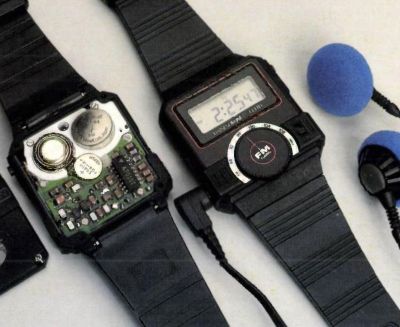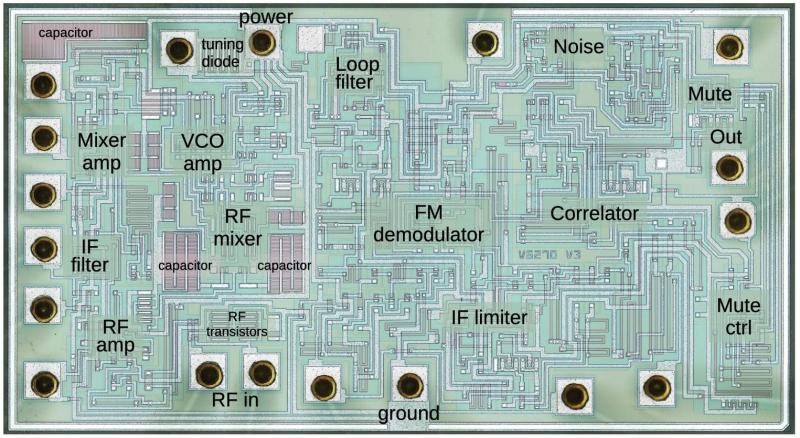
During the 1980s a lot of consumer devices suddenly got a lot smaller as large-scale integration using semiconductor technology took off. This included radios, with Philips’ TDA7000 FM radio receiver IC being the first to cram most of what you’d need for an FM radio receiver into a single chip. Recently, [Ken Shirriff] had a poke at analyzing a die shot of the TDA7000, reverse-engineering its functional blocks. How did the Philips engineers manage to miniaturize an FM radio? [Ken] will show you.
The IC was designed in 1977 by two engineers and released in 1983 after some Japanese companies showed strong interest in the IC. While 100 transistors would hardly be LSI today, it was enough to provide a lot of advanced functionality, ranging from differential amplifiers and current mirrors to Gilbert cell mixers. Since it’s an analog chip, it features capacitors in its design in the form of junction capacitors.
In [Ken]’s article, he delves into the process of how the FM signal is processed, amplified, and ultimately turned into a signal that can be sent to an output like headphones or speakers. Although LSI and transistorization are often associated with digitalization and computer technology, analog circuitry like this benefited from it just as much, finally granting humankind the ability to put an entire radio in a single SOIC-packaged chip.
A watch not your thing? How about a credit card? These days a one-chip radio is probably an SDR.















This is (was) all overkill really, if we consider that FM signals can be demodulated by an AM receiver.
All it needed was to go a bit besides center frequency and let slope detection (edge demodulation) do its magic.
Sure, audio quality is worse than using a true FM demodulator.
But does it really matter in this application?
The ear phones shipped with such wrist watch radios are (were) horrible, anyway.
They’re the type of ear phones that are bundled as free gifts together with an
FM scan radio that’s part of a Mickey Mouse magazine or something.
Kewl stawry bro !
Thanks, I guess.. ;)
But yeah, back in the day there was a lot of fuzz about Superhet designs.
Almost on a religious level, I would say. The more super, the better, it seems (double, tripple superhets etc).
Which lead to to overengineered circuits with lots of filters, mixers, IF frequencies and other stages.
In reality, though, about same performance was possible with simpler designs.
Which also had less self-noise, often. Thanks to having less transistors, also.
Such as the super regenerative circuit (rigjt English term?).
Image frequency rejection was less strong of course, but that wasn’t so dramatic for a pocket radio.
After having listened to shortwaves with enough “modern” superhet radios, a well built direct conversion receiver is surprisingly nice and quiet. What might be lost in sensitivity, comes back with much lower noise floor. NE602 is your friend.
Wow the white noise is a cool ‘UX’ design decision!